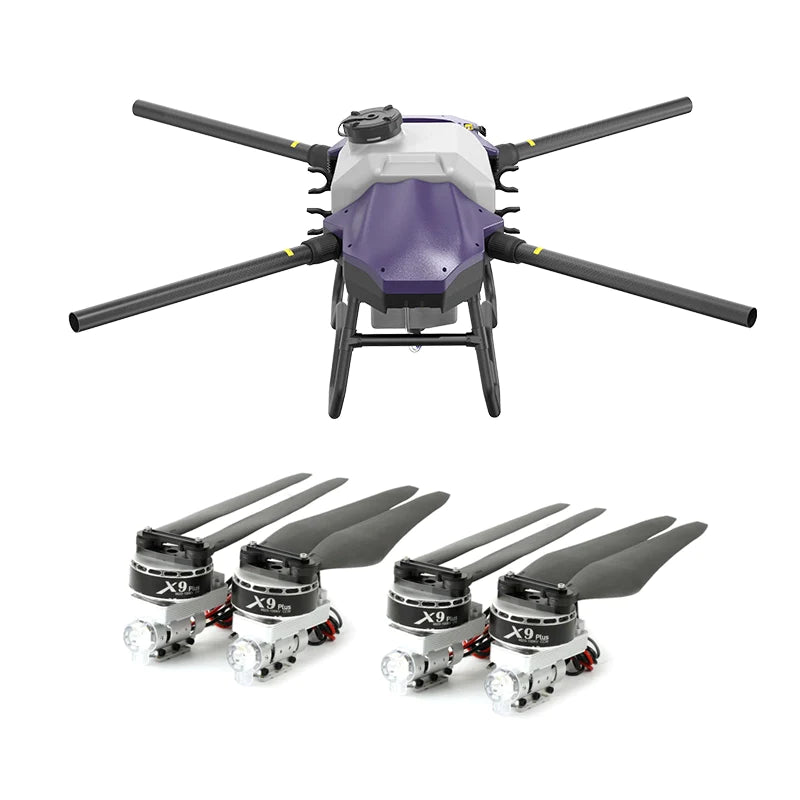The modern farming landscape is drastically changing thanks to technological advancements that improve efficiency and productivity. Agriculture drones have been a game-changer, especially when it comes to the management of crops. They are specially designed for agricultural use and offer farmers the chance to lower cost of labor and improve precision when spraying, as in addition to increase yields of crops.
Drones in Agriculture The Rise of Drone Agriculture
Sprayer drones or agriculture drones have become essential tools for the agriculture industry. These drones have advanced technologies which allow to perform a wide range of tasks including spraying pesticides and herbicides on large areas of crops. Unlike traditional methods, agriculture drones offer unparalleled precision making sure that the appropriate quantity of product is sprayed exactly where it is needed, minimizing waste and reducing the impact on the environment.

The use of drones in agriculture can be particularly advantageous for large-scale farming operations, where manually spraying crops can be lengthy and labor-intensive. Drones are able to cover vast areas quickly, thereby saving farmers both time and money. They also let them to focus on other crucial aspects of farm management.
The 20L Agriculture Drone The 20L Agriculture Drone: Efficiency and Precision
The 20L Agriculture Drone is a versatile and efficient sprayer drone designed for farms with crop areas ranging from 200 to 1,000 acres. This drone comes with tanks of 20 liters. It’s ideal for medium-sized farms that require frequent spraying, but does not require a larger drone of 30 liters.
A lightweight design enhances maneuverability, and the drone’s battery system is not as overloaded. The arms that fold up make it easy to transport and deploy the drone on the field. This feature is especially useful for farmers who have to quickly travel between different areas of their farm.
The 20L Agriculture Drone also boasts a quick-release medicine cabinet and battery system, streamlining the refilling and charging. This reduces the time spent in operations, enabling farmers to maintain a consistent spraying schedule. The drone is also equipped with FPV and Radar cameras, which offer real-time feedback, which can improve the accuracy and precision of spraying. These cameras have enhanced control and monitoring capabilities, which is particularly helpful for novice users.
The 30L Agriculture Drone The 30L Agriculture Drone: Power and Capacity Large-Scale Farms
The 30L Agriculture Drone offers the ideal solution for large-scale farming operations. This sprayer drone’s 30-liter tank is designed to meet the requirements of large agricultural areas. It also offers a larger payload than the previous 20L model. This tank’s capacity is increased, allowing the drone to cover more area in less time.
The 30L Agriculture Drone is built with sturdy and light-weight frame that helps reduce dead weight but maintains high force and impact resistance. This design ensures that the drone is able to withstand the demands of large-scale farming operations which require durability. Like the 20L model that is available, the 30L Agriculture Drone comes with foldable arms and a pluggable tank system which makes it portable and user-friendly.
30L’s ability to fly in different modes and even autonomously is among its best-known features. This feature allows the drones fly on pre-programmed paths that ensure consistent and precise spraying of large fields. Farmers who are managing several tasks may find the auto mode very beneficial as they are able to let their drone carry out its tasks without supervision.
What impact will Drone Sprayers on Modern Farming?
Agriculture drones have had an enormous impact on the farming sector in particular the 20L and 30L model. They automatize the process of spraying and cut down on labor costs through reducing the amount of time required. Additionally, the precision provided by drones has improved crop management, leading to healthier plants and higher yields.
Agri-drones don’t just bring economic benefits but also preserve the environment. Sprayer drones cut down on fertilizer and pesticide use by ensuring that chemicals are only applied when they are required.
Conclusion
Agriculture drones, such as the 30L or 20L sprayer will be the norm in the near future. Thanks to their high-tech capabilities, efficiency, and versatility drones are helping farmers overcome the challenges of modern agriculture. A drone for agriculture could be an excellent investment regardless of whether you’re running a small-scale farm or a large operation. It can increase the efficiency of your operation and also save you money. As technology continues to evolve drones for agriculture will become more important in the sustainability of farming.